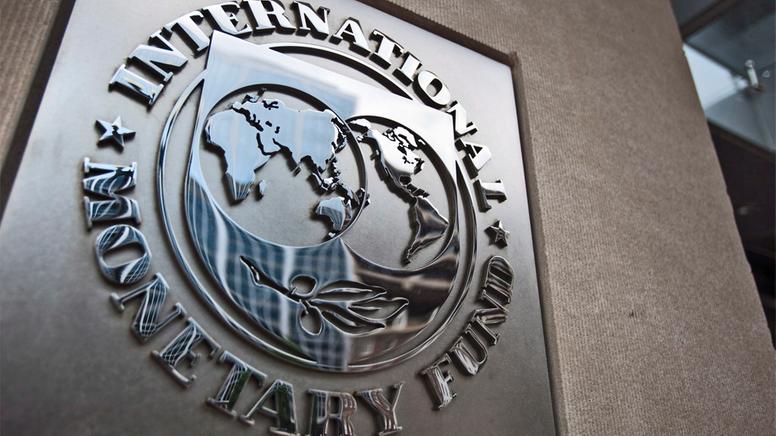Blog

IMF forecasts UK growth at 2.9%
The dynamics that were emerging at the time of the last WEO in October are becoming more visible. Put simply, the recovery is strengthening. We forecast world growth to be 3.6 percent this year, 2014, 3.9 percent next year, up from 3.3 percent in 2013. So, a substantial improvement.
Let me do the usual quick tour of the world, starting with advanced economies. In advanced economies we forecast growth to reach 2.2 percent in 2014, again up from 1.3 percent in 2013. So a substantial improvement. The recovery which was starting to take hold in October is becoming not only stronger, but also broader. The various brakes which limited growth are being slowly loosened. Fiscal consolidation is slowing, and investors are clearly less worried about debt sustainability in most of the advanced economies. Banks are becoming stronger, and although we are far from a full recovery, the normalization of monetary policy, both conventional and unconventional is now on the agenda.
Now, the other point to make is that although these brakes are loosened, they're loosened at different paces across different countries, and so the recovery remains uneven, which is another theme of this WEO report. The recovery is strongest in the United States, without much question, where growth is forecast to be 2.8 percent in 2014. It is also strong in the U.K., in Germany, where some imbalances persist, but where we forecast growth to be 2.9 percent for the United Kingdom, and 1.7 percent for Germany. In Japan, where we forecast 1.4 percent growth in 2014, fiscal stimulus has played a large role. And the strength of the recovery depends in large part on whether private demand, private domestic demand, and exports will take the relay.
And going back, finally, for advanced economies, going back to the euro area, the good news is that for the first time in two years, southern periphery countries are forecast to have positive, if admittedly low, growth. But while their exports are generally strong, internal demand is still weak. It has to become stronger if the recovery is to be sustained in those countries.
Let me turn to emerging and developing economies. I think the first point to make is that these economies will continue to have strong growth, lower than pre-crisis, but high nevertheless. We forecast their growth to be 4.9 percent this year, slightly up from 4.7 percent in 2013. In particular, we forecast growth for China of 7.5 percent and for India of 5.4 percent. And, of particular note is the performance of Sub-Saharan Africa, where we forecast growth of 5.4 percent. Now, strength, yes, but these economies have to perform, operate in a changing world environment due to the recovery in advanced countries and there are two aspects to it. Stronger growth in advanced economies implies increased demand for their exports, and that is clearly very good for them. But the normalization of monetary policy in the United States, however, implies tighter financial conditions and what can be described as a tougher financial environment. So stronger exports on one hand, and tougher environment, financial environment on the other.
Foreign investors are becoming less forgiving and so macroeconomic weaknesses, even if they're not worse than before, are becoming more costly. And, the last point on this is that I think we can expect the kind of bumps that we saw earlier this year and in May, June of last year to happen again, so that the environment will be more bumpy looking forward.
Let me turn to risks. Acute risks have decreased, but risks have not disappeared. A few points:
Japan will need all of its three arrows if it is to both sustain growth and maintain fiscal sustainability.
Turning to southern Europe, adjustment and recovery in southern Europe cannot be taken for granted, especially if Euro Area-wide inflation remains low, or even turns into deflation. This would make the task of reestablishing competitiveness in the south even harder than it is.
The risk, as discussed in the Global Financial Stability Report, financial reform is incomplete, and the financial system remains in various dimensions at risk.
On risks, geopolitical risks have risen, but for the moment they haven't had global macroeconomic implications. Now, looking ahead, again, as this recovery strengthens, the focus must be increasingly turning to the supply side, and I want to make three points here.
First, potential growth in many advanced economies is very low. Now, this is bad on its own, but it also makes fiscal adjustments that most countries have to do much more difficult. So, in this context, measures to increase potential growth are becoming more important. These range from rethinking the shape of labor market institutions to increasing competition and productivity in a number of nontradable sectors, to rethinking the size of the government in some countries, to reexamining-examining the role of public investment.
Second point. Although the evidence is not yet clear, potential growth in many emerging market economies also appears to have decreased. In some countries, such as China, lower growth may be in part a desirable by-product of more balanced growth, but in others there is clearly scope for a number of structural reforms which could help increase the underlying growth rate.
Third and finally, as the effects of the financial crisis slowly diminish, another trend may well come to dominate the scene, namely rising inequality, although inequality has always been perceived as a central issue, not only in economic turns, but in social turns, political turns. Until recently it was not seen as having major implications for macroeconomic developments. I think this belief is increasingly called into question. How inequality affects both the macroeconomy and the design of macroeconomic policy will likely be increasingly important items on our agenda for a long time to come.
For more information, visit: http://www.imf.org/external/np/tr/2014/tr040814.htm



Comments